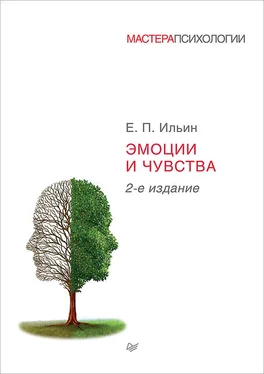Eisenberg N., Fabes R., Miller P. A., Fultz J., Shell R., Mathy R. M., Reno R. R. Relation of sympathy and personal distress to prosocial behavior: A multimethod study // Journal of Personality and Social Psychology, 1989, v. 57, p. 55—66.
Ekman P. Cross-cultural studies of facial expression // Ekman P., Friesen W. Darwin and facial expression: A century of research in review. N.-Y., 1973, p. 169—222.
Ekman P. Are the bawsic emotions? // Psychological Review, 1992, v. 9, p. 550—553.
Ekman P. All emotions are basic // P. Ekman, davidson (eds.). The nature of emotion: Fundamental questions. N.-Y., Oxford Univ. Press, 1994, p. 15—19.
Ekman P., Friesen W. V. Unmasking the face. New Jersey, 1975, 212 p. Ekman P., Friesen W . Measuring facial moovement // Environmental Psychology and Nonverbal Behavior, 1976, 1 (1).
Ekman P., Friesen W. V. Investigator’s quide to the Facial Action Coding System. Part Ï, Palo Alto, California, 1978a.
Ekman P., Friesen W. V. Manual for the Facial Action Coding System. Part Ï, Palo Alto, California, 1978b.
Ekman P., Friesen W. V. Felt, false and miserable smiles // J. of Nonverbal Behavior, 1982, v. 6 (4), p. 238—252.
Ekman P., Levenson R. W., Friesen W. V. Autonomic nervous system activity distinguishes among emotions // Science, 1983, v. 221, p. 1208—1210.
Elfenbein H. F., Ambady N., Manual M. K., Harizuka S., Kumar S. Cross-Cultural Pattern in Emotion Recognition: Highlighting Desing and Analitical Techniques // Emotion, 2002, v. 2 (1), p. 75—84.
Ellis A. Rational psychotherapy //J. of General Psychology, 1958, 59, p. 35—49.
Ellsworth P. C. Levels of thougth and levels of emotion // P. Ekman, R. J. Davidson (eds.). The nature of emotion: Fundamental Questions. N.-Y., Oxford Univ. Press, 1994, p. 192—196.
Emde R., Katz E. L., ThropeJ. K. Emotional expression in infancy. П. Early deviations in Down's syndrome // Lewis M., Rosenblum L. Development of affect. N.-Y., Plenum, 1978, p. 351—360.
Emde R. et at, 1976. Цит. по: Блум Ф., Лейзерсон А., Хофстедтер Л. Мозг, разум и поведение. М., 1988.
Emde R. N., SorseJ. F. The reward of infancy: Emotional availability and maternal referencing // In: Frontiers of infant psychiatry, N.-Y., 1983, p. 17—30.
Endler N. S., Hunt J., Rosenstein A.J. An S-R inventory of anxiousness // Psychol. Monogr., 1962, v. 76 (whole № 536).
Eysenck M. Yappiness: Facts and Myths. Hove, East Sussex, LEA, 1990.
Epstein S. Emotions and psychopathology from the perspective of cognitive-experien-tal selftheory // W. E. Flack, J. D. Laird (eds.). Emotions in psycopathology. Theory and research. Series in affective science. N-Y, Oxford Univ. Press, 1998.
Erikson E. H. Childhood and society. N.-Y., Norton, 1950, 1963.
Ewert O. The Attitudinal Character of Emotion // M. Arnold (ed.). Feeling and Emotion. N.-Y., Academic Press, 1970.
FeeneyJ. A. Attachment, caregiving, and marital satisfactio // Personal Relationships, 1996, v. 3, p. 401—416.
Feeney J. A., Noller P. Attachment style as a predictor of adult romantic relationships //J. of Personality and Social Psychology, v. 58, p. 281—291.
FehrB., Russell J. A. Concept of emotion viewed from a prototype perspective //J. Exp. Psychol.:General, 1984, v. 113, p. 464—486.
FehrB., Russell J. A. The concept of love viewed from a prototype perspective //J. Pers. Soc. Psychol., 1991, v. 60, p. 425—438.
Feingold A. Gender differences in effects of physical attractiveness on romantic attraction: A comparison across five research paradigms // J. of Personality and Social Psychology, 1990, v. 59, p. 981—993.
Feingold A. Gender differences in the effects of similarity and physical attractiveness on opposite-sex attraction // Basic and Applied Social Psychology, 1991, v. 12, p. 357—367.
Feingold A. Good-looking people are not what we think // Psychological Bulletin, 1992, v. 11, p. 304—341.
Feinman S., Lewis M. Social referencing at ten months: A second order effect on infants responses to strangers // Child Development, 1983, v. 54, p. 878—887.
Feldman L. A. Valence focus and arousal focus: Individual differences in the structure of affective experience // J. of Personality and Social Psychology, 1995, v. 69, p. 153—166.
Felmlee D. Fatal attraction: Affaction and disaffection in intimate relationship //Journal of Social and Personal Relationships, 1995, v. 12, p. 295—311.
Ferguson T.J., Eyre H. L. Engendering gender differences in shame and guilt: Stereotypes, socialisation, and situational pressures // A. H. Fisher (ed.). Gender ande Emotion. Paris, Cambridge University Press, 2000, p. 254—276.
Feshbach N. D. Parental empathy and chikld adjustment/maladjustment // N. Eisenberg, J. Strayer (eds.). Empathy and its Development. N.-Y., Cambridge University Press, 1987.
Field Т. М. et al. Discrimination and imitation of facial expression by neonantes // Sciens, 1982, v. 218, 3 4568, p. 179—181.
Fine B. Introversion-extraversion and motor vehicle driver behaviour // Perceptual and Motor Skills, 1963, v. 12, p. 95—100.
Fischer A. H. Sex differences in emotionality: Fact or stereotype // Feminism and Psychology, 1993, v. 3, p. 303—318.
Fisher A. H., Manstead A. S. The relation between gender and emotions in different cultures // A. H. Fisher (ed.). Gender and Emotion. Paris: Cambridge University Press, 2000, p. 71—94.
Fivush R., BucknerJ. P. Gender, sadness, and depression: The development of emotional focus through gender discourse // A. H. Fischer (ed.). Gender and emotion. N.-Y., Cambridge University Press, 2000, p. 232—253.
Flechtner G. Uber die Monotonie // Untersn. Psychol. Philos. Padag., 1937, 12.
Fordyce M. W. Development of a program to increase personal happiness //Journal of Counseling Psychology, 1977, v. 24, p. 511—521.
ForgasJ. P. Mood and judgment: The affect infusion model (AIM) // Psychological Bulletin, 1995, v. 117, p. 39—66.
Fouillee A. Temperament et caractere selon les individus les sexes et les races. Paris, Alkan, 1895.
Fox N., Davidson R. Electroencephalogram asymmetry in response to the approach of a stranger and maternal separation in 10-month-old infants // Developmental Psychology, 1987, v. 23, p. 233—240.
Fraiberg, 1971. Цит по: Блум Ф., Лейзерсон А., Хофстедтер Л. Мозг, разум и поведение. М., 1988.
Frank G. On the validity of hypothesis derived from Rorschach. 1. The relationship between color and affect // Perceptual and Motor Skills, 1976, v. 43, p. 411—427.
Frazier P., Esterly E. Correlates of relationship beliefs: Gender relationship experience and relationship satisfaction //Journal of Social and Personal Relationships, 1990, v. 7, p. 331—352.
Fredrickson B. L. What good are positive emotions? // Review of General Psychology, 1998, v. 2, p. 300—319.
Fredrickson B. L. The role of positive emotions in Positive Psychology? The Broaden-and Build Theory of Positive Emotions // American Psychologist, 2001, v. 56 (3), p. 218—226.
Freedman D. G. Human infancy: An evolutionary perspective. Hillsdale, N.-Y., Lawrence Erlbaum, 1974.
Freedman J. Happy peaple: What happiness is, who has it and why. N.-Y., Harcourt Brace Jovanovich, 1978.
Freedman J. L., Wallington S. A., Bless E. Compliance without pressure. The effect of guilt // J. of Personality and Social Psychology, 1967, 7 (2), p. 117—124.
Читать дальше
Конец ознакомительного отрывка
Купить книгу












